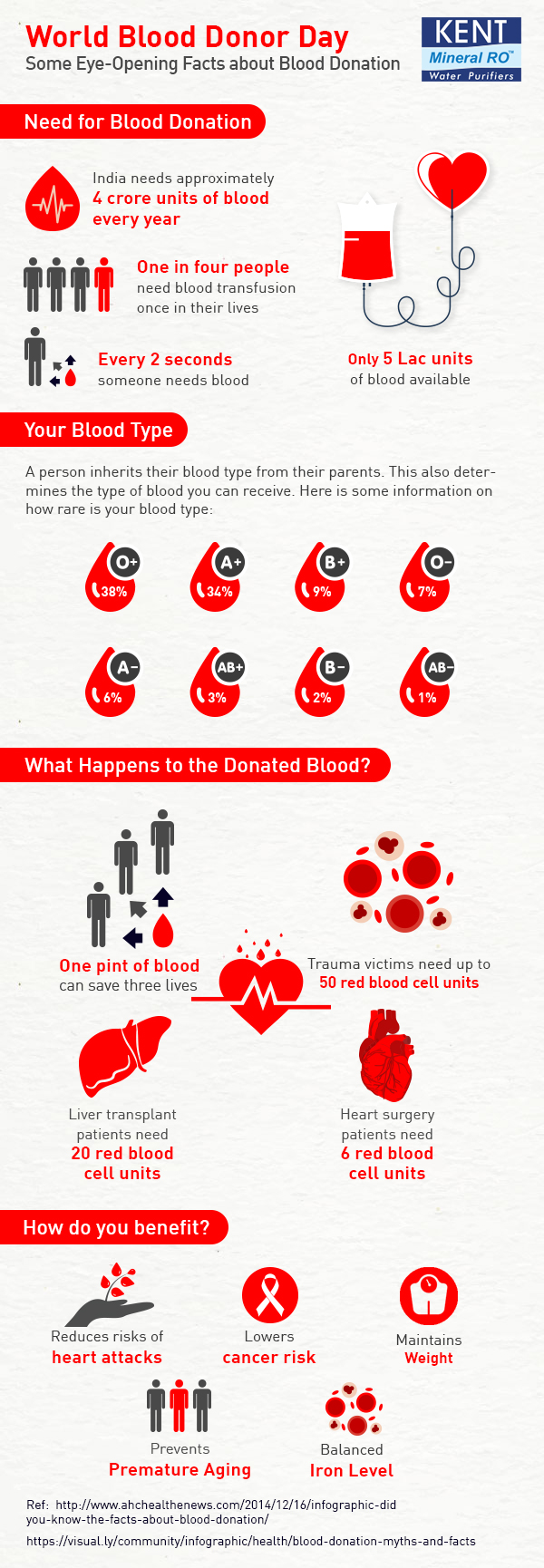World Blood Donor Day-Some Eye Opening Facts about Blood Donation
Blood donation can save a million lives. The noble step can also help patients recover from serious injuries, complex operations, and childbirth. Unfortunately, as a result of a lack of knowledge, there is a serious shortage of blood donors. On this World Blood Donor Day, observed on the 14th of June every year, we share some eye-opening facts about blood donation and how it can help millions of people.

Blood donation can save a million lives. The noble step can also help patients recover from serious injuries, complex operations, and childbirth. Unfortunately, as a result of a lack of knowledge, there is a serious shortage of blood donors. On this World Blood Donor Day, observed on the 14th of June every year, we share some eye-opening facts about blood donation and how it can help millions of people.
Know About Blood Donation Information
Blood donation is a critical process that helps save lives. Donated blood is used in medical treatments, surgeries, and emergencies. It’s essential for accident victims, patients with certain medical conditions, and during surgeries. Donating blood is safe and usually takes about 15-20 minutes. Blood banks ensure the collected blood is screened, processed, and stored properly. It’s important to meet eligibility criteria and follow guidelines for a successful donation.
Also Read: Delicious Juices to Keep your Liver Healthy
Types of Blood and percentage
Blood type, a crucial component of your body’s biology, determines the antigens present on the surface of your red blood cells. The main blood types are A, B, AB, and O, each with a positive or negative Rh factor. These types influence compatibility for blood transfusions and organ transplants. They also play a role in pregnancy and newborn health. Understanding your blood type helps medical professionals provide suitable treatments and interventions.
| Blood Type | Percent of the Population |
| O+ | 37% |
| O- | 6% |
| A+ | 34% |
| A- | 6% |
| B+ | 10% |
| B- | 2% |
| AB+ | 4% |
| AB- | 1% |
Blood Types Compatibility
Anyone eligible can donate blood, but the types of blood, plasma, or platelets you can receive depend on your specific blood type.
| Blood Type | Gives | Receives |
| O+ | O, A, B, AB+ | O+, O- |
| O- | Everyone | O- |
| A+ | A+, AB+ | A+, A-, O+, O- |
| A- | A+, A-, AB+, AB- | A-, O- |
| B+ | B+, AB+ | B+, B-, O+, O- |
| B- | B+, B-, AB, AB- | B-, O- |
| AB+ | AB+ | Everyone |
| AB- | AB+, AB- | AB-, A-, B-, O- |
Frequently Asked Questions
1. What is the blood donation process?
The blood donation process involves several steps: registration, medical history review, mini-physical examination, actual donation, and post-donation refreshments. A needle is inserted to collect blood, which takes about 10-20 minutes. After donation, a brief rest and snacks are provided. The collected blood is tested, processed, and stored for use in medical treatments. The whole process usually takes around 30-45 minutes.
2. How much blood do we donate?
During a standard whole blood donation, you typically donate about 1 pint (approximately 470 millilitres) of blood. This amount is relatively safe and won’t significantly affect your overall health. Your body quickly replenishes the donated blood, usually within a few weeks. However, specific donation types like platelets or plasma may involve different amounts and procedures.
3. What is the age for blood donation?
The age for blood donation usually falls between 18 and 65 years. However, regulations can vary depending on the country and blood bank. Some places may allow 16-year-olds to donate with parental consent. Donors should be generally healthy, meet weight requirements, and not have specific medical conditions. Always check with your local blood donation center for specific age eligibility criteria.




